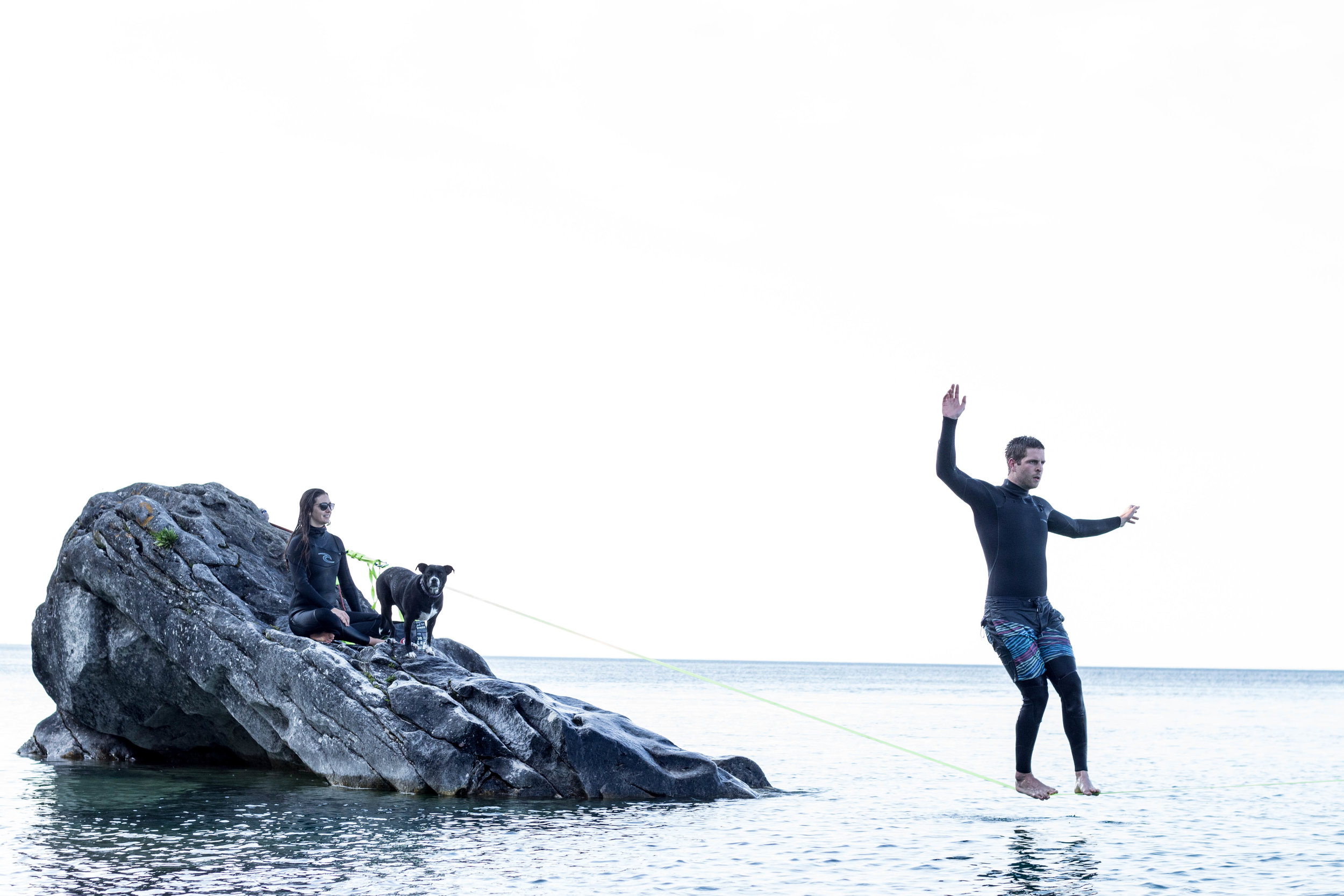Slacklining
Slacklining is an incredible display of balance and focus.
Slackline health
Slacklining is an impressive display of balance, but it is much more than that. Slacklining engages your core, increases your ability to focus and helps with your posture.
Balance is a combination of 3 systems, your eyesight, prorioception and your vestibular system. This will be explained further below.
Focus like anything is a practiced skill and slacklining does not leave much room for breaks in focus. Some people report slacklining to be somewhat of a moving meditation.
Core and postural muscles are engaged in slack lining due to the constant small corrections that must be made to continue to walk. Your core and glutes must also be strong enough to control your body as you transfer weight from foot to foot while walking the line. If you watch someone slackline they are generally walking with good posture and there chest open to where they are headed with their arms raised. This provides a perfect scenario to train postural muscles. As you maintain this good posture for the length of your walk you are engaging holding these muscles for a considerable amount of time. This is ideal for postural muscle due to the fact that we need these muscle to turn on for long periods of the day to keep us in good posture. with arms out and making controlled minor corrections to our balance we are activating and controlling muscles tied to shoulder stabilization, another crucial aspect of posture.
Slack line balance
As mentioned above balance is a combination of:
eyesight
proprioception
vestibular system
Eyesight
Try to balance on one foot. Now try to do the same thing with your eyes closed. you will notice it becomes harder. As long as you still have two systems in place our bodies should be able to accomplish the task, but we are not as effective at it compared to when all are systems are in place. Our eyes send signals to our brain to tell us where we are in relation to our surroundings. This is why it is important to look up towards the far anchors or further while slacklining. This gives you a better point of reference as opposed to looking at where you are stepping.
Proprioception
Proprioception is where your body is in space. Our body sends multiple signals to our brain based on the stretch, tension and position of muscles, tendon, ligaments and joints in our body. As you can imagine walking a slackline would need these signals to be quick and precise compared to walking on a sidewalk. You can help train these signals with the use of balance exercises (balance boards, bosu balls, balance discs, and of course slacklining).
Vestibular system
Our vestibular system is made of semicircular canals in our inner ear. Imagine liquid filled tubes in the 3 axis of rotation our bodies could encounter with a small paddles at one end. If we spin, cartwheel or flip the fluid will push the paddle to one side. The shift of this paddle will notify the brain that our body has encountered a change in the axis of our body position. We can now correct this change if need be.
Fun fact: When you drink a little too much alcohol the vestibular system is responsible for the spins. alchohol is less dense than the fluid in the semicircular canal and as it diffuese into the “paddle” (cupula) it begins to float in the liquid, therfore if you put your head down on a pillow the “paddle” will float/bend upwards telling your brain you are spinning. You will also note that when you close your eyes the spinning gets worse this is because you are removing the eyesight system and relying more on your vestibular system.
Chiropractic care
Balance is used in day to day activities as well as sports and recreational activities. If you are looking to increase your balance or try slacklining come see us for some exercises that will help you fine tune the 3 balance systems listed above.


